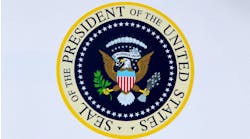The Competitive Edge: Want a Manufacturing Renaissance? Fix the Regulatory System
If politicians in Washington truly want to see a manufacturing renaissance in this country, they need to reform the regulatory system. Manufacturers understand the role regulations play in ensuring such important societal goals as health and safety. But the current process for promulgating rules is simply out of control.
See Also: Global Manufacturing Economy Trends & Analysis
The Manufacturers Alliance for Productivity and Innovation's research into the impact of federal regulations on manufacturers, prepared by NERA Economic Consulting, shows that since 1998 the cost of complying with manufacturing-related rules has grown far more rapidly than factory production: Manufacturing regulatory costs increased an average of 7.6% a year in that time span compared with average growth of 0.4% for manufacturing output. In other words, even when American manufacturing is in recession -- such as in 2007, when it contracted more than 20% compared with 5% for the overall economy -- federal regulatory costs keep mounting. For a country that depends on manufacturing to help expand the economy and create jobs, this is madness.
Death By A Thousand Cuts
Since 1981, the federal government has promulgated more than 2,300 manufacturing-related regulations -- an average of just under 1.5 regulations per week for more than 30 years. These regulations have been layered one on top of another during those decades, interacting with each other to create additional distortions in the economy. As a consequence, the actual impact on manufacturers is considerably greater than the mere sum of the individual regulations. No wonder manufacturers see the current regulatory regime as death by a thousand cuts.
Economist Michael Mandel likens this layering effect to "throwing pebbles in a stream." Just as no single pebble will affect the flow of a stream, no single regulation deters innovation and production. But throw in enough small pebbles and you'll dam up a stream. With enough layered regulations, the world's most innovative, dynamic manufacturing sector starts to stumble.
Unfortunately, the federal government doesn't even have a firm grasp of the number of pebbles it's thrown into the manufacturing stream. During the research process, NERA couldn't measure the impact of all manufacturing-related regulations because Executive Order 12866 only requires executive branch agencies to report costs for "major" regulations -- those determined to have an annual effect on the economy of $100 million or more. Almost 90% of regulations that affect manufacturers -- more than 2,000 of the 2,300 rules examined -- don't meet that threshold, so NERA was unable to glean cost estimates for them. In addition, the Office of Management and Budget has no jurisdiction to require cost-benefit analysis by independent regulatory agencies such as the Securities and Exchange Commission, which oversees the complex financial rules under Sarbanes-Oxley and Dodd-Frank. Based on NERA's projections, unaccounted regulations could -- when aggregated -- have a comparable economic impact to the cost of all major regulations. That would mean the OMB is significantly underestimating the impact of regulations on businesses.
Need for Better Coordination
Of course, highlighting the growing regulatory burden on manufacturers does not equate to calling for eliminating regulation. Manufacturers simply need a more cost-effective, coordinated system through which federal agencies issue rules targeting their operations.
Fortunately, a growing number of policymakers on both sides of the aisle recognize the need for an approach that builds some political and managerial discipline into the system. For example, Sens. Angus King, I-Maine, and Roy Blunt, R-Mo., recently introduced the Regulatory Improvement Act of 2013, which would create a commission to review outdated regulations with the goal of modifying, consolidating or repealing regulations in order to reduce compliance costs and encourage growth and innovation. It was modeled after a policy floated by the Democratic-leaning Progressive Policy Institute.
| SLIDESHOW: See how federal regulations are impacting manufacturing at: iw.com/regulation. |
Manufacturers do not have unlimited resources: Every dollar that goes to regulatory compliance is a dollar that cannot be used for jobs, R&D or capital investment. If policymakers want a competitive American manufacturing sector, they need to implement a more coordinated regulatory approach. Policymakers who opt to ignore the myriad challenges facing American manufacturing risk jeopardizing future economic growth, innovation and job creation.
Stephen Gold is president and CEO of the Manufacturers Alliance for Productivity and Innovation (www.mapi.net).





